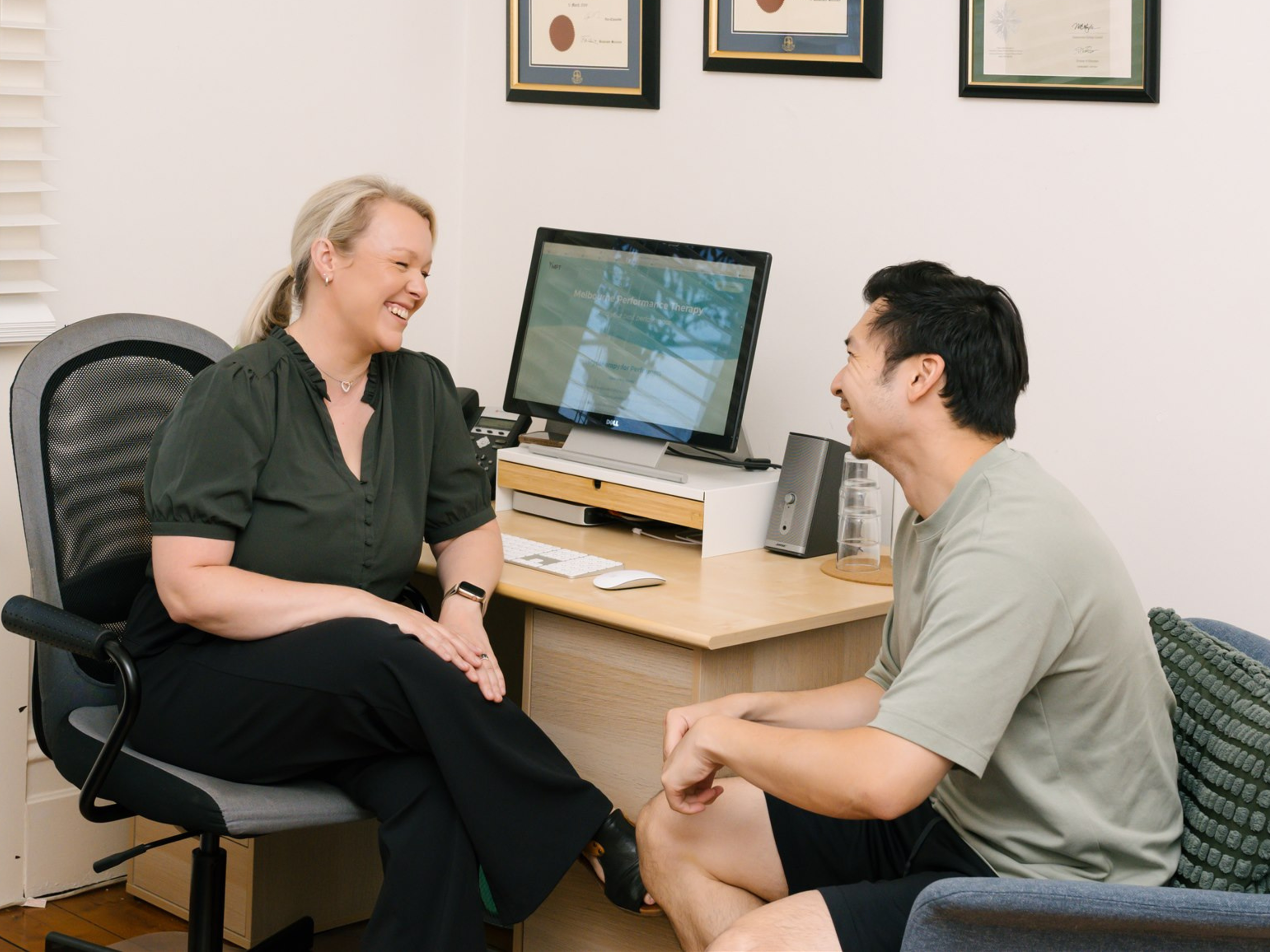Myotherapy: Is it only for when you’re in pain?
Should you see Myotherapist only when you’re sore? Lots people think of Myotherapy as something that you book only when you’re in really bad pain or commonly known as; ‘crisis mode’ - can’t turn your neck, back’s ‘gone’ or your shoulder pain are flared up badly.
The truth? Myotherapy can absolutely help in these moment. But it can also be useful when you’re not in pain, or when you’re feeling ‘just a bit tight’ or ‘not right’. Let’s take a look at both scenarios and how Myotherapy can help.
Myotherapy can be helpful when you’re experiencing pain
When you’re in pain
When you’re sore, restricted or in an acute flare up, Myotherapy can support you in a few key ways:
Reducing pain
Manual therapy treatment, movement, and education can help to reduce your pain, decrease the protective spasm, calm your nervous system, and help make things feel more comfortable. This helps to get you moving again and further help the pain to settle.
Improving movement
When we’re in pain, we move differently - maybe it’s limping to avoid a sore area, holding yourself so you don’t ‘tweak’ anything, or avoiding certain position. Targeted treatment and movement helps you to:
Move more freely
Stop overprotecting the sore area
Use your stabilising and global muscles effectively again
Calm the nervous system
Pain isn’t just about the sore muscle - it’s driven and controlled by your nervous system. Your nervous system is responding to a whole range of stimuli when it sends pain messages. It uses all this information to decide how much ‘protection’ you need in that moment.
Supportive treatment, education and movement helps to:
Turn down the ‘alarm system’ in your body
Helps your brain to interpret your movement as ‘safe’ and less ‘threatening’
Give you confidence to move the sore area again
Giving you a clear plan
One of the most stressful parts of pain is not knowing what it is, what to do, or when it will get better. A Myotherapy session can help you answer:
What should I start doing?
What should I change or temporarily reduce?
How long is this likely to last?
What movements or habits will actually help?
The aim isn’t just to treat you and send you away - it’s about helping you to understand what’s going on and what you can do next.
When you feel ok (or ‘just a bit tight’)
Myotherapy sessions can also be great to check in with how you’re feeling in your body
You don’t have to be in a crisis to benefit from Myotherapy. In fact, some of the best results happen when you come in before things boil over.
Catching adaptations early
You body is always adapting to what you do - work, sport, training, family life, work life, stress, poor sleep. You name it, the body adapts specifically to the demands that we place on it. Sometimes this adaptation is good and is exactly what we want, other times the adaptations are not ideal.
Myotherapy can help you identify:
Areas that are taking more load than they should
Movement patterns that might not be ideal for you and your body
Muscles that are not functioning as well as they could be
Identifying these patterns and changes early means that you can begin to make small changes back. This often helps with avoiding pain from long-term adaptations that were not ideal.
Supporting your body as you increase your load
In you’re:
Starting out at the gym, pilates, yoga, cycling, running, playing sport
Getting back into any of these ^
Building or increasing your effort at the gym or other activity
Changing what you do physically in your day; e.g. sitting more, driving more, cycling to work, taking the stairs more
Changing jobs, moving house, navigating other life changes
Myotherapy can help your body to navigate and handle that change more easily, and help with strategies on how to build up those challenges gradually.
Fine-tune how your body moves
Rather than chasing ‘perfect posture’ or perfecting your movement, we look at how your body moves over time and what strategies it uses to cope with the daily challenges placed upon it.
We can help with:
Exploring positions that feel more comfortable and sustainable
Adjusting your desk set up, your running or your lifting technique
Build strength where you need it and mobility where you need it
Helping you feel confident in your body’s capacity
A lot of times, people will say; “It doesn’t hurt, but it also doesn’t feel quite right either”
Honestly, we get it. For lots of people dysfunction doesn’t always feel like ‘pain’. We all have quite different and varied definitions of what we call pain. Sometimes, it can be hard to describe what you’re feeling, or explain why something doesn’t feel right. This can leave you feeling uncertain about your body and what it needs.
Myotherapy can be helpful to feel:
More mobile and ‘free’ in your movement
More confident to do the activities you want to do like playing that game of frisbee with your kids, or increasing your training load or trying a new spin class
Less worried about every niggle turning into a big setback
So… when should you come in?
Both reasons are valid:
When you’re in pain - to settle things, restore movement and get a plan
When you’re ok - to stay on top of niggles and support your body as you manage the demands of daily life
If you’re unsure whether now is the right time, or if Myotherapy can help with your situation send me an email at hello@melbourneperformancetherapy.com .


